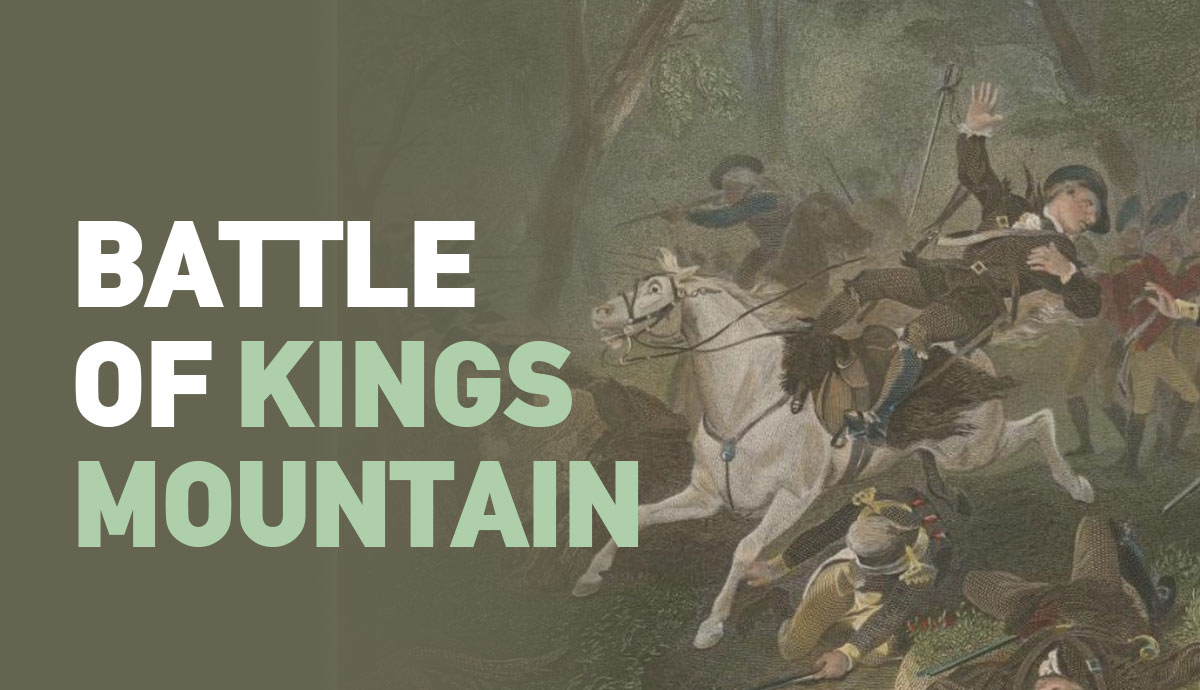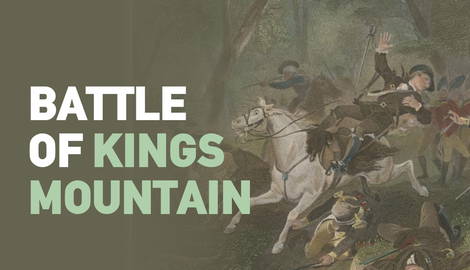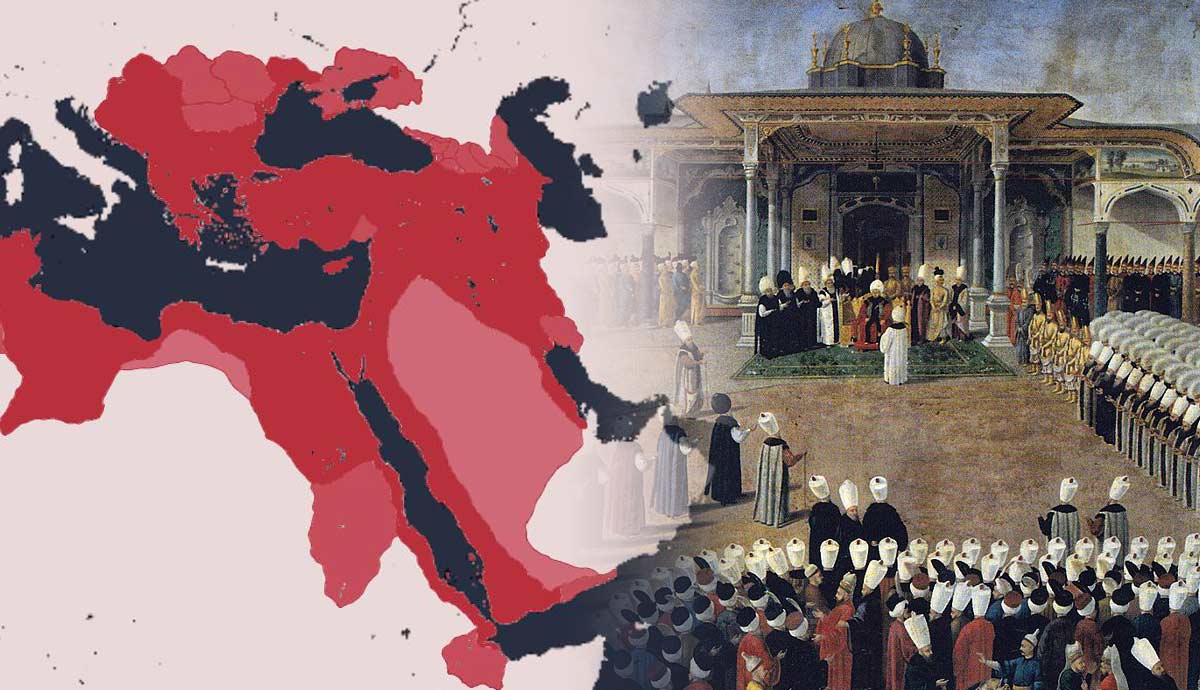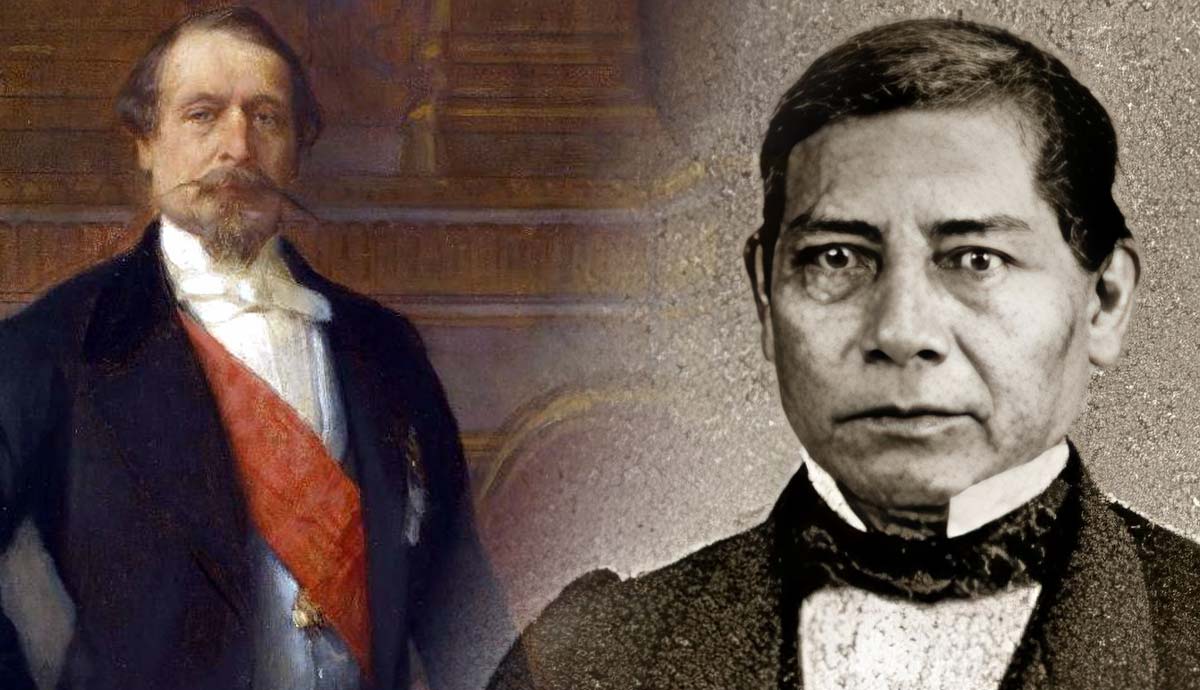
American Patriots referred to the years 1779 and 1780 during the Revolutionary War (1775-1783) as the “Dark Days.” Indeed, the American cause faced numerous setbacks during this period. For instance, American general Benedict Arnold’s stunning treason nearly resulted in losing the strategic position of West Point, New York. Moreover, historian Walter Edgar (2001) notes that the Patriots lost two armies in the South between May and August of 1780. But in October 1780, a motley force of Patriot militia delivered a victory at Kings Mountain to restore American fortunes. Kings Mountain set in motion the course of events leading to the decisive Franco-American victory at the siege of Yorktown in October 1781.
The American Revolution as a Civil War?

Patriot militia surrounded Loyalist forces encamped on Kings Mountain, South Carolina, in the afternoon of October 7, 1780. As they prepared to fight that day, many combatants recognized they were about to face off against family members and neighbors. In fact, historian J. David Dameron (2003) says no less than 18 sets of fathers and sons fought at Kings Mountain. While some served side by side, others took part in the battle on opposing sides. In some instances, the men were unaware they had relatives on the other side of the battlefield.
America’s Revolutionary War was more than a struggle for independence from British imperial rule. Indeed, after 1778, Britain’s efforts to defeat the American rebellion were only part of a larger global conflict with France, Spain, and the Netherlands. However, the war was also a civil war in British North America.
Like the 1777 Battle of Oriskany, the fighting on Kings Mountain overwhelmingly pitted family members and neighbors from the local community against one another. In other words, these were intensely personal battles that did not involve the war’s larger regular armies. Yet, battles like Kings Mountain played a significant role in determining the war’s outcome as well as the future of North America.
British Strategy in the Southern Colonies

British forces attempted to weaken Patriot influence across the South before 1779. However, British efforts to that point had ended in disaster. For example, historian Rick Atkinson points out that Patriot victories at Great Bridge, Virginia, Moore’s Creek Bridge, North Carolina, and Charleston, South Carolina, in 1775-1776 stifled British and Loyalist activities across the South. Patriot militia also halted Loyalist advances in the South Carolina backcountry at Fort Ninety-Six in November 1775.
British commander Sir Henry Clinton altered his strategy following France’s entry into the war and military stalemate in the northern theater after the June 1778 Battle of Monmouth Courthouse. Instead of seeking a decisive battle with George Washington’s main Continental Army around New York, Clinton shifted British efforts to the southern colonies.
British officials in London and North America now saw France as their primary opponent. As a result, they envisioned most future military campaigns would take place in the West Indies, fighting to control lucrative sugar islands like Guadeloupe. Clinton and other British leaders believed the war against France in North America required control of port cities in the American South like Charleston.
At the same time, securing these southern ports to help fight the French in the Caribbean could simultaneously improve British chances of suppressing the American rebellion. Throughout the Revolutionary War, British officials believed most of the American population would join the British army or otherwise aid the effort to end the rebellion. According to this view, British troops would be welcomed as liberators anywhere they marched.
The American Revolution in the South

The fighting around the northern and mid-Atlantic colonies in 1775-1778 did not produce the anticipated American enthusiasm for the British army. However, the story in the Carolinas and Georgia had been different.
Certain demographic features help explain the prevalence of loyalism in the South. In the region’s interior, many recent immigrants from Scotland and present-day Germany remained loyal to the British Crown or sought to stay neutral. Even Georgia and South Carolina’s Patriots had been among the most hesitant to declare independence from Britain in 1776.
Yet, British forces did not arrive in large numbers to support these loyal communities. That changed in late 1778. Savannah, Georgia, became the initial British target in the southern theater of war.
British forces quickly captured Savannah in December 1778. A Franco-American force failed to recapture the city the following year and retreated to Charleston.
In December 1779, Sir Henry Clinton sailed from New York with a British army intending to capture Charleston. American commander Benjamin Lincoln surrendered Charleston to Clinton after a prolonged siege in May 1780. Dameron notes it was the largest American surrender of the war.
Clinton did not continue the campaign in South Carolina. Instead, he returned to New York and left Lord Charles Cornwallis in command.
Cornwallis and Tarleton

Clinton ordered Cornwallis to establish a heavy British military presence in the interior or backcountry of South Carolina. Clinton was confident that the army’s arrival would attract additional Loyalist volunteers. Moreover, Cornwallis sent cavalry commander Banastre Tarleton and his feared British Legion to pursue the remaining Patriot forces in South Carolina.
A column of Virginia troops under Abraham Buford arrived in South Carolina too late to aid the Patriots in Charleston, besieged by Clinton’s army. Tarleton’s British Legion caught up to Buford’s troops at the frontier settlement of Waxhaws. The result was a controversial massacre. Tarleton’s troops cut down Buford’s men, who raised a white flag of surrender.
While the exact details are disputed, Tarleton’s refusal to take prisoners became known to Patriots as “Tarleton’s Quarter.” As historian John W. Gordon notes (2003), regardless of what happened, Patriot propagandists seized on the imagery of Tarleton’s brutality to gather support for the resistance to British occupation in the Carolinas and Georgia.
Cornwallis followed Clinton’s victory at Charleston by destroying a second American army at Camden, South Carolina, in August 1780. In three months, the Americans lost two armies in South Carolina.
British forces in South Carolina thus appeared poised to reconquer the entire South for King George III.
Patrick Ferguson: The British Bulldog

Before he returned to New York, Clinton created an independent command designed to oversee the recruitment and training of a Loyalist militia force in the South. He named Major Patrick Ferguson of the 71st Highlanders to the position of Inspector of Militia in the Southern Provinces.
Patrick Ferguson was born to an aristocratic family in Scotland in 1744. He was one of the British military’s most well-known and accomplished figures serving in America. His distinguished military career dated back to the Seven Years’ War.
While recovering from a series of illnesses in the late 1760s, Ferguson became interested in studying firearms. In time, he designed a revolutionary breech-loading rifle. The rifle’s design enabled rapid reloading and the ability to fire from the prone position. Even King George III was impressed after witnessing a demonstration of Ferguson’s invention.
In 1777, Ferguson commanded an elite company armed with his rifles. However, after being wounded at the Battle of Brandywine, Ferguson’s unit was disbanded. Although he lost the use of his right arm, Ferguson learned how to fire and use a sword with his left hand. He also equipped himself with a loud whistle to issue commands.
As Inspector of Militia, Ferguson developed a force of 4,000 well-trained Loyalists. Ferguson’s troops affectionately called him the “Bulldog” for his determination. His second in command, New Yorker Abraham DePeyster, became known as the “Bulldog’s Pup.”
Ferguson’s troops were poised to mop up any remaining Patriot militia and support Cornwallis’ efforts to reassert British authority across the South.
Ferguson’s Opponents: The Overmountain Men

Patriots across the South were reeling from British victories in 1779 and 1780. However, Tarleton’s brutality at Waxhaws and Ferguson’s threats to “lay waste” any community supporting the rebellion spurred a Patriot military response.
Groups of irregular Patriot forces known as partisans succeeded in harassing British supply lines and outposts. Led by men like the “Swamp Fox” Francis Marion and the “Carolina Gamecock” Thomas Sumter, partisans led Tarleton and other British commanders on a dangerous chase through the South Carolina wilderness.
Many Scots-Irish settlers in communities like Waxhaws had extensive kinship networks across the backcountry region. Historian Walter Edgar notes that Scots-Irish settlers tended to be deeply religious Presbyterians and resistant to the British Crown’s authority. They were motivated to respond like the partisans to the British and Loyalist attacks. Many Scots Irish thus joined militia groups that attacked the British and Loyalists, including those who fought at Kings Mountain.
Patriot militia from the Carolinas, Virginia, and present-day Tennessee, collectively known as the “Overmountain Men,” prepared to pursue Ferguson’s force. Many Patriot volunteers came from settlements across the Blue Ridge Mountains, hence the term “Overmountain Men.”
William Campbell became the force’s overall commander. According to Dameron, Campbell was among the first Virginians to join the Continental Army in 1775. However, he soon returned to the Virginia frontier as a colonel in the militia.
Several capable militia commanders, including John Sevier and Isaac Shelby, joined Campbell. Sevier and Shelby had years of experience fighting the British and their Native American allies on the frontier.
The Road to Kings Mountain

In late September, the main groups of Patriot militia met at Sycamore Shoals on the Watauga River (near present-day Elizabethton, Tennessee). As author Wilma Dykeman notes (1978), the Patriots were motivated by Ferguson’s proclamation, threatening to “march his army over the mountains, hang their leaders, and lay their country waste with fire and sword.”
But before he would carry out that threat, Ferguson’s troops raided the interior of North Carolina and acquired additional Loyalist volunteers. Although Ferguson’s force gathered strength, this also gave the Patriot militia time to organize and mount a pursuit.
Additional militia from North Carolina, South Carolina, and Georgia joined the Overmountain men as they prepared to track down Ferguson’s Loyalists. According to Dameron, Campbell’s overall Patriot force now numbered over 900.
For his part, Ferguson became isolated from other British and Loyalist forces in the region. He took a defensive position on Kings Mountain and sought reinforcements from Cornwallis, Tarleton, or additional Loyalist units.
However, historian John Gordon says Ferguson soon learned reinforcements would not be available. He had a force of 1,075 on Kings Mountain.
The Battle of Kings Mountain: Opening Moves

The Patriots caught up with Ferguson’s troops at Kings Mountain on the South Carolina side of the Carolina border on October 6, 1780. Campbell and the other militia commanders agreed to a plan of attack for the following day. The Patriots would surround the mountain base and gradually move up to encircle the Loyalists.
Concealed by the thick forest, the Patriots inched closer to Ferguson’s position undetected. Dameron notes that the battle began at around two on the afternoon of October 7, 1780.
Loyalist officer Anthony Allaire mentioned that Ferguson covered his British uniform with a distinctive checked shirt and remained on horseback throughout the battle.
At first, Loyalist troops felt confident in their strong defensive position, and Ferguson’s confident commands issued by his famous whistle. At first, Loyalists swept the Patriots off the plateau of Kings Mountain with a bayonet charge.
However, the Loyalist musket volleys proved ineffective as they fired over the heads of attacking Patriots. The battle turned against the Loyalists once it became clear the Patriots had surrounded the mountain and would not retreat.
The Battle of Kings Mountain: Ferguson’s Defeat

Ferguson unleashed a deadly counterattack as the Patriots closed in on his position. But Patriot sharpshooters soon killed Ferguson with at least six shots finding their target. Soon, Loyalist forces began to surrender.
In little over two hours of fighting, at least 246 Loyalists were killed against just 29 Patriots.
Unlike most Revolutionary War battles, Kings Mountain was notable for the prevalence of rifles instead of muskets among the combatants. Only Ferguson’s troops mostly carried muskets on the battlefield that day.
The primary difference between a rifle and a musket is speed versus accuracy and compatibility with the bayonet. Although an eighteenth-century rifle like those carried by many Patriot militiamen at Kings Mountain featured slow loading times, it was accurate. For instance, a rifle could hit a target at 200 or 300 yards.
However, the rifle could only be fired about once per minute. Importantly, it could not accept a bayonet. On the other hand, a smooth-bore musket could be easily and quickly loaded. While inaccurate, a musket could be fired at least three times per minute by an experienced soldier and accept a bayonet.
Although Ferguson was a proponent of utilizing rifles, he commanded his troops at Kings Mountain using the conventional eighteenth-century method of linear warfare with muskets and bayonets. Ferguson was ultimately killed by the firearms he had unsuccessfully lobbied senior British officials to fully embrace.
Why Was the Battle of Kings Mountain Significant?

Leaders on both sides immediately recognized the magnitude of the Patriot victory at Kings Mountain. Patriots celebrated crushing Ferguson’s Loyalist threat. For example, Dameron points out that Thomas Jefferson called Kings Mountain “The turn of the tide of success.”
On the other hand, British officials lamented the loss of a capable commander in Patrick Ferguson. The battle’s demoralizing effect on the South Carolina Loyalists was even more pressing. British forces never recovered the brief recruitment momentum Ferguson oversaw for the remainder of the war. Thus, Patriot voices increasingly had the upper hand in communities across the South.
Ferguson’s defeat at Kings Mountain also influenced Cornwallis’ next moves. Cornwallis hesitated to push into North Carolina in the immediate aftermath of Ferguson’s defeat. The Patriots at Kings Mountain bought the Continental Army vital time to regroup after the defeats at Charleston and Camden. Under a capable commander in Nathanael Greene, the Continental Army would be better prepared to face Cornwallis in the South.
The battle’s other significance involves the makeup of the opposing forces. Patrick Ferguson was the lone Briton on the battlefield at Kings Mountain. Every other combatant on either side was American. In fact, while some Loyalists wore newly issued British redcoat uniforms, most of the combatants on either side wore typical frontier civilian clothing. Dameron says Patriots put paper strips in the hats while Loyalists wore evergreen boughs to distinguish friends from enemies.
Aftermath

Kings Mountain reflected the civil war within the American Revolution as much as any battle in the war for American independence. The battle’s aftermath was equally volatile and deadly for Patriots and Loyalists in the South Carolina backcountry. Like the battle, the violent aftermath highlights the civil war dynamic in the American Revolution.
For example, Dameron notes that as the Patriots traveled with roughly 800 Loyalist prisoners, they learned of atrocities committed by other Loyalist commanders against their communities. In response, some Patriots attacked their prisoners, and other Loyalists were killed attempting to escape.
The situation worsened when news arrived that several Patriots had been hanged at Fort Ninety-Six. In response, Dameron explains that Patriots held an ad hoc trial in North Carolina, charging dozens of Loyalist prisoners from Kings Mountain with crimes against the local communities. At least thirty were found guilty and sentenced to death. Nine Loyalist prisoners were hanged before news arrived that Tarleton was in pursuit.
Moreover, Campbell received orders to deliver the prisoners to the Continental Army’s southern department headquarters at Hillsboro, North Carolina. At that time, the Patriot force that had fought at Kings Mountain disbanded, with some bringing the Loyalist prisoners to Hillsboro and others returning home.
Today, the battlefield is preserved as part of the Kings Mountain National Military Park.
References and Further Reading
Atkinson, R. (2019). The British Are Coming: The War for America, Lexington to Princeton, 1775-1777. Holt.
Dameron, J. D. (2003). Kings Mountain: The Defeat of the Loyalists, October 7, 1780. Da Capo Press.
Dykeman, W. (1978). The Battle of Kings Mountain, 1780: With Fire and Sword. NPS.
Edgar, W. (2001). Partisans and Redcoats: The Southern Conflict that Turned the Tide of the American Revolution. HarperCollins.
Gordon, J.W. (2003). South Carolina and the American Revolution: A Battlefield History. USC Press.











